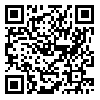Volume 7, Issue 3 (August 2020)
Avicenna J Neuro Psycho Physiology 2020, 7(3): 178-183 |
Back to browse issues page
Download citation:
BibTeX | RIS | EndNote | Medlars | ProCite | Reference Manager | RefWorks
Send citation to:



BibTeX | RIS | EndNote | Medlars | ProCite | Reference Manager | RefWorks
Send citation to:
Mosavi S, Ehtesham Zadeh P, Eftekhar Saadi Z, Heydarei A. Comparative Study of the Effectiveness of Matrix Training and tDCS Treatments on Positive and Negative Affects and Craving in Substance Abusers. Avicenna J Neuro Psycho Physiology 2020; 7 (3) :178-183
URL: http://ajnpp.umsha.ac.ir/article-1-229-en.html
URL: http://ajnpp.umsha.ac.ir/article-1-229-en.html
1- Department of Psychology, Khorramshahr Branch, Islamic Azad University, Khorramshahr, Iran
2- Department of Psychology, Ahvaz Branch, Islamic Azad University, Ahvaz, Iran ,ehtesham@iauahvaz.ac.ir
3- Department of Psychology, Ahvaz Branch, Islamic Azad University, Ahvaz, Iran
2- Department of Psychology, Ahvaz Branch, Islamic Azad University, Ahvaz, Iran ,
3- Department of Psychology, Ahvaz Branch, Islamic Azad University, Ahvaz, Iran
Abstract: (1347 Views)
Background: Substance dependence is acknowledged as one of the major social and health issues inflicting severe and profound physical and psychological harm, as well as numerous social damages, such as divorce and unemployment. The present study aimed to make a comparison between the effectiveness of Matrix training and transcranial direct current stimulation (tDCS) treatments on positive and negative affects and craving in substance abusers who referred to Ahwaz addiction treatment centers within 2018-2019.
Materials and Methods: The present semi-experimental study was conducted using a pre-test post-test control group design with a two-month follow-up. The study population consisted of all substance abusers who referred to Ahwaz addiction treatment centers within 2018-2019. A total of 60 volunteers were selected by voluntary sampling method and randomly assigned to Matrix training (n=20), tDCS (n=20), and control (n=20) groups. Data were collected by The Positive and Negative Affect Schedule (PANAS) and Desire For Drug Questionnaire and were analyzed in SPSS software (version 22).
Results: Based on the obtained results, Matrix, tDCS, and control groups were significantly different in terms of positive and negative affects and craving (P<0.001). Moreover, it was found that Matrix training and tDCS were effective on positive and negative affects and cravings (P<0.001); nonetheless, no significant difference was observed between the matrix and tDCS groups (P>0.05).
Conclusion: Generally speaking, it can be concluded that Matrix training and tDCS methods are equally effective in emotions and craving.
Materials and Methods: The present semi-experimental study was conducted using a pre-test post-test control group design with a two-month follow-up. The study population consisted of all substance abusers who referred to Ahwaz addiction treatment centers within 2018-2019. A total of 60 volunteers were selected by voluntary sampling method and randomly assigned to Matrix training (n=20), tDCS (n=20), and control (n=20) groups. Data were collected by The Positive and Negative Affect Schedule (PANAS) and Desire For Drug Questionnaire and were analyzed in SPSS software (version 22).
Results: Based on the obtained results, Matrix, tDCS, and control groups were significantly different in terms of positive and negative affects and craving (P<0.001). Moreover, it was found that Matrix training and tDCS were effective on positive and negative affects and cravings (P<0.001); nonetheless, no significant difference was observed between the matrix and tDCS groups (P>0.05).
Conclusion: Generally speaking, it can be concluded that Matrix training and tDCS methods are equally effective in emotions and craving.
Article Type: Research Article |
Subject:
Health Education and Promotion
Received: 2020/01/9 | Accepted: 2020/05/10 | Published: 2020/08/14
Received: 2020/01/9 | Accepted: 2020/05/10 | Published: 2020/08/14
Send email to the article author
| Rights and permissions | |
 |
This work is licensed under a Creative Commons Attribution-NonCommercial 4.0 International License. |







